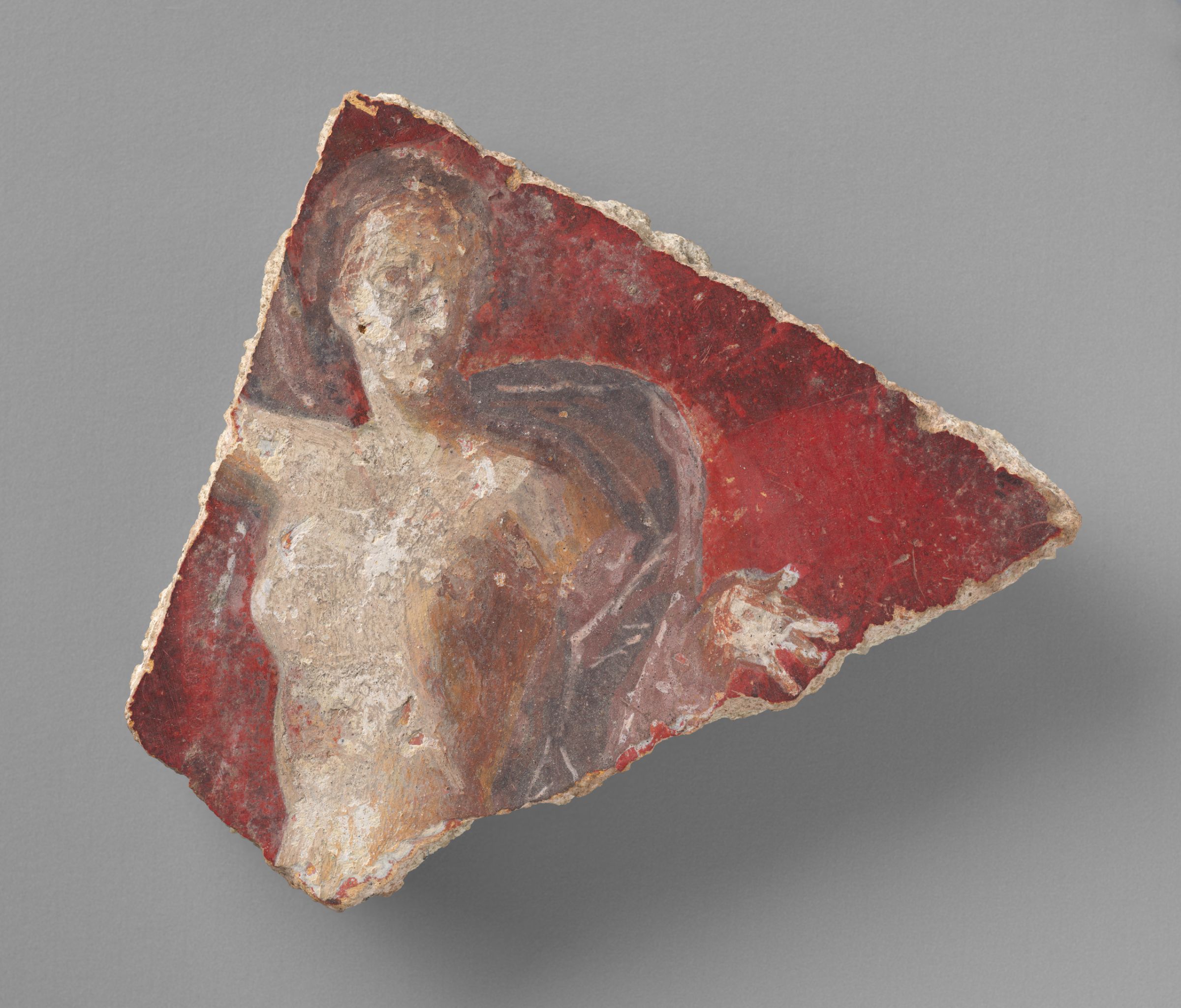1921.37: Wall Painting Fragment from the Villa at Boscotrecase
Paintings
This object does not yet have a description.
Identification and Creation
- Object Number
- 1921.37
- Title
- Wall Painting Fragment from the Villa at Boscotrecase
- Classification
- Paintings
- Work Type
- painting
- Date
- 10 BCE-1 BCE
- Places
- Creation Place: Ancient & Byzantine World, Europe, Campania
- Period
- Roman Imperial period, Early
- Culture
- Roman
- Persistent Link
- https://hvrd.art/o/292169
Location
- Location
-
Level 3, Room 3700, Ancient Mediterranean and Middle Eastern Art, Roman Art
View this object's location on our interactive map
Physical Descriptions
- Medium
- Pigment on plaster
- Technique
- Fresco painting
- Dimensions
-
H. 47.5 x W. 75.8 cm (18 11/16 x 29 13/16 in.)
with frame: H. 48.2 x W. 83 x D. 9.7 cm (19 x 32 11/16 x 3 13/16 in.)
Provenance
- Recorded Ownership History
- Albert Gallatin, New York, (by 1921) gift; to the Fogg Art Museum, 1921.
Acquisition and Rights
- Credit Line
- Harvard Art Museums/Arthur M. Sackler Museum, Gift of Albert Gallatin
- Accession Year
- 1921
- Object Number
- 1921.37
- Division
- Asian and Mediterranean Art
- Contact
- am_asianmediterranean@harvard.edu
- Permissions
-
The Harvard Art Museums encourage the use of images found on this website for personal, noncommercial use, including educational and scholarly purposes. To request a higher resolution file of this image, please submit an online request.
Descriptions
- Description
-
This wall painting fragment comes from the so-called 'Mythological Room' of the villa at Boscotrecase (room 19) where it would have decorated the top register of red-paneled walls. Preserved here is the upper golden register, framed by two narrow white bands in which appears a decorative fleur-de-lis in red pigment. The lower portion of the fragment preserves remains of the bright red panel that would have occupied the lower portion of the wall. Two vignettes appear in the gold register. On the left, in a square panel is a figure. She wears a blue headdress and red draped garment. In profile, the figure kneels on a green cushion with her arms raised at her waist (1). On the right, two birds stand in a puddle of water: one bends to drink while the second stands upright.
The details of both vignettes are only partially preserved because the secco paint has worn.
1. Compare to figures in the Black Room from the Boscotrecase Villa in the Metropolitan Museum of Art, 20.192.2. - Commentary
-
This fragment is a fine example of what is commonly called the Pompeian Third Style, popular during Augustus' reign (r. 27 BCE-14 CE) in the late first century BCE and early first century CE. An inscription from the villa suggests the owner was Agrippa Postumus (b.12 BCE-d. 14 CE), the son of Augustus' daughter Julia and her husband Marcus Vipsanius Agrippa, the close advisor of the Emperor Augustus. Significant renovations occurred at the site following 12 BCE, suggesting a date for the paintings during the final decade of the first century BCE. The elegant and refined quality of this and other paintings at the villa provide some of the best examples of paintings, particularly outside of Rome, and certainly of the so-called Third Style. The Egyptianizing themes were favored by Augustus and other Roman elite during the years of the early Empire, following the victory over Cleopatra.
The villa was partly excavated from 1903-1905 and subsequently published in 1922, by the Italian archaeologist Matteo della Corte (1). Other panels were divided between collections of the Metropolitan Museum of Art and the Museo Archeologico Nazionale di Napoli. A reconstructed panel combining the upper frieze from the west all with the primary, red register from the east wall of room 19 in the Metropolitan Museum of Art offers a model for this fragment's original wall context (2, 3).
Notes:
1. M. Della Corte, "Scavi eseguiti da privati nel territorio di Pompei," Notizie degli Scavi 19, 1922, pp. 459ff.
2. P. von Blanckenhagen and C. Alexander, The Augustan Villa at Boscotrecase, (Mainz: Verlag Philipp von Zabern, 1990), pl. 38.
3. Compare to the Metropolitan Museum of Art inv. 20.192.13, M. L. Anderson, "The Imperial Villa at Boscotrecase," The Metropolitan Museum of Art Bulletin, 45.3 (1987): p. 51, fig. 55.
Publication History
- Elizabeth Molacek, Kate Smith, Kathy Eremin, Lucy Cooper, and Georgina Rayner, Re-Discovering a Roman Wall Painting at Harvard: New Research on a Fragment from the Villa at Boscotrecase, Studies in Conservation (2020), vol. 65, no. 5, pp. 296-311
- Elizabeth Molacek, Kate Smith, Katherine Eremin, Lucy Cooper, and Georgina Rayner, Re-Discovering a Roman wall painting at Harvard: New research on a fragment from the Villa at Boscotrecase, Studies in Conservation, Studies in Conservation (https://doi.org/10.1080/00393630.2020.1733789, March 9, 2020), 65, 5, Pages 296-311, Figure 1, Page 297; Figure 6, Page 300; Figure 9, Page 301; Figure 10, Page 301; Figure 11, Page 302; Figure 12, Page 303; Figure 13, Page 303; Figure 14, Page 204; Figure 15, Page 304
Exhibition History
- 32Q: 3700 Roman, Harvard Art Museums, Cambridge, 06/13/2017 - 01/01/2050
Subjects and Contexts
- Roman Domestic Art
Related Digital Tours
Related Articles
Related Objects
Verification Level
This record has been reviewed by the curatorial staff but may be incomplete. Our records are frequently revised and enhanced. For more information please contact the Division of Asian and Mediterranean Art at am_asianmediterranean@harvard.edu



